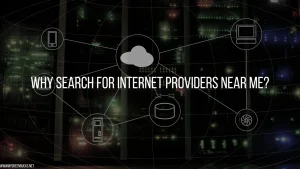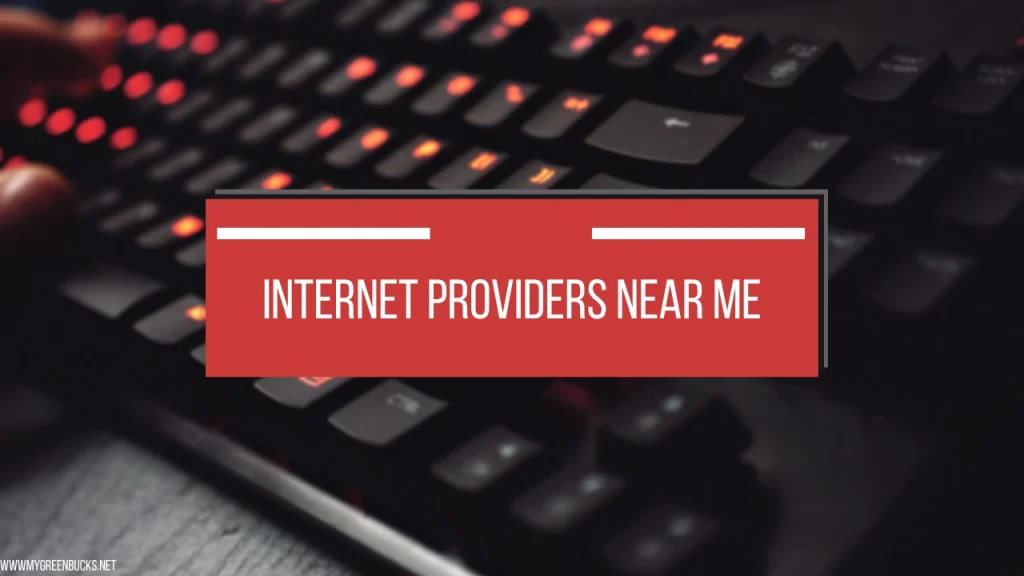In today’s digital world, access to fast and reliable internet is no longer a luxury—it’s a necessity. Whether you are working from home, streaming your favorite shows, gaming online, or attending virtual classes, you need a strong internet connection. That’s why so many people search for internet providers near me to find the best service in their area.
But with so many options available, how do you know which provider is right for you? This detailed guide will walk you through everything you need to know, from how to search and compare local providers to the types of internet connections and how to choose based on your usage needs.
You May Like: shop dyson humdinger
Why Search for Internet Providers Near Me?

When you search for internet providers near me, your goal is simple: find the best internet options available where you live. Not all providers offer service in every neighborhood. By focusing your search on your area, you can narrow down the choices to those that actually serve your location.
Local searches help you:
-
Compare plans based on what’s truly available to you
-
Avoid wasting time researching providers that don’t cover your area
-
Discover promotions specific to your region
-
Read reviews from neighbors and local users
In short, it’s the smartest first step to getting internet that fits your needs and budget.
Types of Internet Connections Offered by Local Providers
Before you choose from the internet providers near me, it’s important to understand the different types of internet connections. Each one offers different speeds, pricing, and reliability.
1. Fiber-Optic Internet
Fiber is the fastest and most reliable form of internet. It uses light to transmit data, allowing for lightning-fast speeds and minimal lag. It’s ideal for households with multiple users, remote workers, gamers, and streamers.
Pros:
-
Speeds up to 1 Gbps or higher
-
Equal download and upload speeds
-
Low latency
Cons:
-
Limited availability in rural or older areas
-
Slightly more expensive
2. Cable Internet
Cable internet uses the same lines as cable TV. It’s faster than DSL and satellite but can slow down during peak usage times because it’s shared with neighbors.
Pros:
-
Widely available
-
High-speed options for homes
-
Affordable bundling with TV
Cons:
-
Speeds may fluctuate
-
Slower upload speeds
3. DSL (Digital Subscriber Line)
DSL uses traditional telephone lines to deliver internet. It’s slower than fiber and cable but often available in areas where other options aren’t.
Pros:
-
Affordable
-
Available in many rural areas
Cons:
-
Slower speeds
-
Older technology
4. Fixed Wireless
Fixed wireless internet sends a signal from a nearby tower to a receiver at your home. It’s a good option in rural locations without wired infrastructure.
Pros:
-
Wireless connection
-
No phone or cable lines required
Cons:
-
Affected by weather
-
Data caps may apply
5. Satellite Internet
Satellite internet is available almost everywhere. It works by sending a signal from a satellite to a dish on your home.
Pros:
-
Accessible in remote areas
Cons:
-
High latency
-
Data limits
-
Slower speeds
How to Compare Internet Providers Near Me
To find the best internet provider in your area, consider the following factors:
1. Availability
Not all providers are available everywhere. Start by checking which companies serve your exact address or ZIP code.
2. Speed
Think about how you use the internet. Are you watching Netflix in 4K, joining Zoom calls, or just browsing the web?
Here’s a general guide:
-
25 Mbps: Good for basic use
-
100 Mbps: Good for small families
-
200–500 Mbps: Ideal for streamers and gamers
-
1 Gbps: Best for heavy usage and multiple devices
3. Price
Compare base prices, contract terms, and extra fees. A plan might look cheap, but equipment rentals, activation charges, and overage fees can raise the cost.
4. Contract vs. No Contract
Some providers require 12- or 24-month contracts, while others offer month-to-month options. Be cautious of early termination fees.
5. Data Caps
Some providers limit how much data you can use each month. If you stream, game, or download large files, look for plans with high or unlimited data.
6. Customer Service
Reliable customer service is important. Look for ratings, reviews, and support options like 24/7 phone lines or live chat.
7. Bundling Options
Many providers offer bundles with TV, phone, or even mobile services. Bundling can help save money if you need multiple services.
Tips for Choosing the Right Internet Plan
When comparing internet providers near me, it’s helpful to match a plan to your needs. Here are some common user types and what to look for:
Light Internet Users
If you just check email, browse the web, and stream a little:
-
25–50 Mbps
-
Low-cost DSL or cable
-
No need for high upload speeds
Families or Shared Households
For multiple users or smart devices:
-
100–500 Mbps
-
Reliable cable or fiber
-
Unlimited data
Gamers and Streamers
For smooth gaming or 4K streaming:
-
500 Mbps to 1 Gbps
-
Fiber preferred
-
Low latency and fast upload
Remote Workers
For video calls and uploads:
-
100–300 Mbps
-
Stable connection with good upload
-
Dependable service
Common Features Offered by Internet Providers Near Me
As you evaluate your local options, look for:
-
Free Installation: Some plans include free setup.
-
Equipment Rental: Modems or routers may be free or cost extra.
-
Wi-Fi Extenders: Providers may offer extenders for larger homes.
-
Self-Installation Kits: For easy DIY setup.
-
Mobile App Management: To control and monitor your connection.
Red Flags to Avoid
While searching for internet providers near me, keep an eye out for these warning signs:
-
Hidden Fees: Ask about installation, maintenance, and taxes.
-
Speed Throttling: Some plans slow down after data limits.
-
Outdated Technology: Avoid older DSL or satellite options unless necessary.
-
Poor Reviews: Check feedback from real customers in your area.
-
Long-Term Contracts: Look for flexible plans when possible.
Internet Providers Near Me in Urban vs. Rural Areas
Urban Areas
In cities and suburbs, users can often choose from multiple providers. Fiber, cable, and 5G home internet are commonly available.
Advantages:
-
Higher speeds
-
More competition
-
Better pricing
Rural Areas
Options may be limited in rural locations. DSL, fixed wireless, and satellite are the most common.
Challenges:
-
Lower speeds
-
Fewer choices
-
Higher costs
Solutions:
-
Government grants for rural broadband
-
New technologies like 5G fixed wireless
-
Community fiber networks
How to Switch Internet Providers
Already have service but want to switch? Follow these steps:
-
Research new options in your area.
-
Choose a plan with better speed, price, or reliability.
-
Check if there are early termination fees on your current plan.
-
Schedule installation with the new provider.
-
Cancel your old service after confirming the new setup works.
Switching may help you save money, get faster speeds, or improve customer support.
Frequently Asked Questions
How do I check what internet providers are available near me?
Enter your ZIP code or street address into a comparison tool to view available providers and their plans.
What’s the best type of internet?
Fiber is the fastest and most reliable, but cable is a strong alternative. DSL and satellite are better suited for areas with fewer options.
Is it possible to get internet without a contract?
Yes. Many providers offer contract-free plans. They may cost slightly more per month but offer more flexibility.
The Future of Local Internet Services
Technology continues to improve internet access. New fiber networks are being built. 5G home internet is becoming more popular. Satellite services are also getting faster.
Expect more choices, better speeds, and lower prices in the future as competition grows.
Final Thoughts: Choose the Best Internet Providers Near Me
Choosing the best internet providers near me doesn’t have to be hard. Start by finding out who offers service at your address. Then compare speeds, prices, reviews, and extras.
Think about how you use the internet and choose a plan that fits your lifestyle and budget. Whether you work from home, stream movies, or run a smart home, the right provider can make your online experience smooth and stress-free.
Don’t just go with the first option—take time to compare and find the best plan for you. Searching for internet providers near me is the first step toward better, faster, and more reliable internet at home.
People Also Read: mayhem album cover



